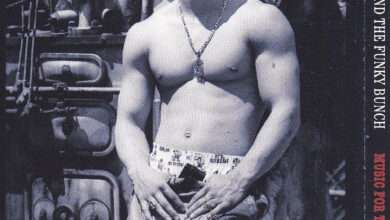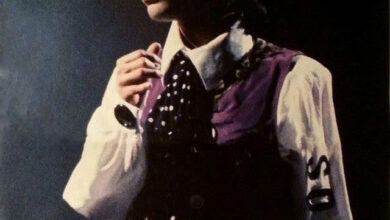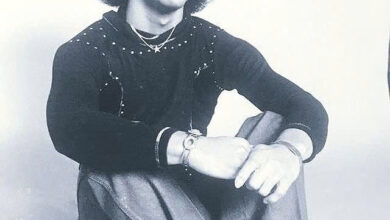Rap Battles to Record Deals: How Eminem’s Battle Rap Skills Laid the Foundation for His Music Career
OPINION: This article may contain commentary which reflects the author's opinion.
Before becoming the Grammy-winning artist known to millions worldwide, Eminem’s journey to hip-hop royalty began in the gritty underground world of Detroit’s battle rap scene. His sharp wit, lyrical dexterity, and ability to command the mic made him a standout in an arena where only the strongest survived. Eminem’s roots in battle rap weren’t just a phase in his career—they were the bedrock upon which his entire musical empire was built.
The Origins: A Young Rapper on the Rise
In the late ’90s, before the release of his groundbreaking album The Slim Shady LP, Eminem, born Marshall Bruce Mathers III, was a young man honing his skills in Detroit’s competitive battle rap circuit. At the time, the rap scene in Detroit was known for its brutal intensity, with artists engaging in rap battles that tested their improvisational skills, wordplay, and ability to humiliate their opponents with scathing disses. It was in this crucible of creativity and competition that Eminem’s signature style took shape.
Unlike many battle rappers who relied on aggression or physical presence, Eminem’s genius lay in his rapid-fire delivery, multisyllabic rhymes, and biting humor. His ability to think on his feet, coming up with clever rebuttals and cutting insults in real time, was what set him apart from his peers. In this world, winning battles wasn’t just about being good; it was about survival. Eminem not only survived—he thrived.
The Turning Point: The Rap Olympics
Eminem’s breakthrough moment came during the 1997 Rap Olympics in Los Angeles. This competition brought together some of the most talented underground battle rappers from across the country, and Eminem, armed with nothing but his raw talent and determination, faced off against some of the best. His performance caught the attention of several key figures in the music industry, most notably an intern at Interscope Records who passed Eminem’s demo tape to legendary producer Dr. Dre.
Though Eminem ultimately placed second in the Rap Olympics, his display of lyrical prowess was enough to make an impression on Dre, who was searching for fresh talent. Dr. Dre saw in Eminem what others had missed—a once-in-a-generation artist who could bridge the gap between underground battle rap and mainstream success.
Translating Battle Skills into Studio Success
What makes Eminem’s rise so remarkable is how seamlessly he was able to translate the skills honed in battle rap into the studio environment. Battle rap is fast-paced, unforgiving, and immediate, demanding that participants come up with inventive lyrics on the spot. In contrast, recording music requires a different set of skills—creating cohesive songs, developing themes, and balancing entertainment with personal expression. Yet Eminem brought his battle rap mentality into the studio, using it to fuel his creativity.
Songs like “The Real Slim Shady” and “Without Me” showcase his battle rap roots through their humor, sharp social commentary, and relentless verbal attacks on celebrity culture. His ability to craft diss tracks, like the infamous “Killshot” directed at Machine Gun Kelly, proves that Eminem never left the battle rap world behind—he simply evolved it into something bigger.
Battle Rap as a Form of Survival
Beyond his technical skills, battle rap taught Eminem resilience. In a scene dominated by bravado and toughness, a white rapper trying to break into a predominantly Black genre faced additional challenges. Eminem often spoke about the racial tension and prejudice he encountered early in his career, even recalling times when he was booed off stage simply for his skin color. These experiences, however, only pushed him to fight harder for his place in hip-hop.
Battle rap became not only a means of artistic expression but also a vehicle for survival and validation. Eminem’s lyrical jabs at his critics, rivals, and even himself reflect the combativeness and vulnerability he learned in those early battles. This duality of aggression and self-reflection is what has made his music resonate with so many people across the world.
The Legacy of Battle Rap in Eminem’s Music
Even after achieving worldwide fame, Eminem’s battle rap origins continue to inform his music. His competitive spirit, sharp wordplay, and willingness to go toe-to-toe with anyone, whether in a freestyle battle or on a diss track, remain core aspects of his persona. He has always viewed rap as a competition, and that mindset has kept him at the top of his game for more than two decades.
His role in films like 8 Mile, loosely based on his life, cemented his legacy as a battle rap legend. The iconic rap battle scenes in the movie became a defining moment in popular culture, illustrating the intensity, creativity, and heart required to succeed in the world of battle rap. The film’s success introduced a wider audience to the underground scene that shaped Eminem’s rise to stardom.
Conclusion: From Battles to Billboard
Eminem’s journey from Detroit’s battle rap scene to the top of the Billboard charts is not just a story of success; it’s a testament to the power of lyrical skill, perseverance, and the hunger to prove oneself. Battle rap gave Eminem the tools to dominate the rap world, but it was his unrelenting drive and adaptability that turned those tools into a global empire. His story proves that even in a genre as competitive and cutthroat as hip-hop, raw talent and dedication can still break through the noise.



